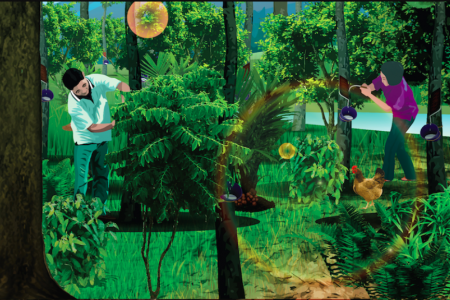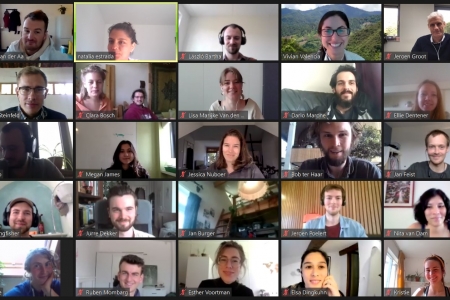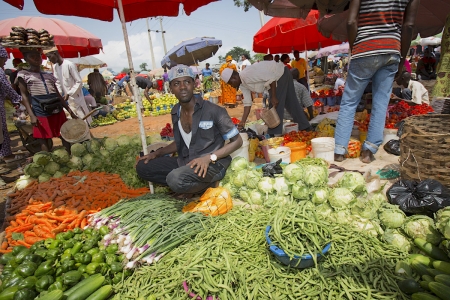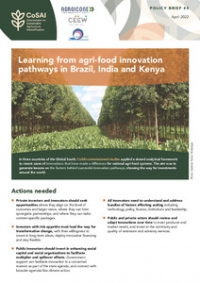The Making Ecosystems Count in the Sustainable Development Goals (SDGs) working group is tackling science for nature and people at a multinational level. Lead by Bioversity International with funding form WLE, the CGIAR Research Program on Policies, Institutions and Markets (PIM), as well as the National Center for Ecological Analysis and Synthesis (NCEAS) and The Nature Conservancy, the working group seeks to understand how the emerging UN Sustainable Development Goals can be broadly leveraged for nature conservation and human well-being. The working group is identifying how the links between ecosystem services and the SDGs can be assessed, modeled and presented to inform sound management of natural capital in development decision-making and help nations achieve their SDG goals.
As the SDGs emerge, large competitive funding pools for different SDG areas will become available, such as nutrition, education, the Global Fund for HIV/AIDS, TB and Malaria. To win funding, national governments will need to show how their plans will contribute to their SDG targets. The team hopes to support government efforts by providing information on how land-use planning decisions may positively or negatively affect attainment of related SDG goals. The team prioritized specific SDGs where ecosystem services have the most relevance and created 33 potential SDG indicators. Presented to the Sustainable Development Solutions Network (SDSN), several of these indicators have been included as placeholders in their final list of proposed indicators to the UN Statistical Commission - a positive outcome. Outstanding issues around immediate uptake included consensus on indicators and the ability to collect data for a particular indicator.
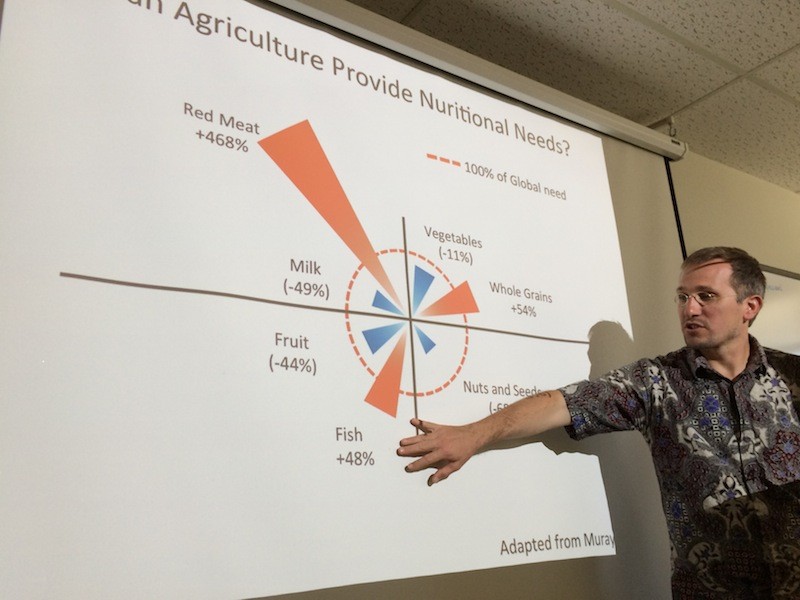
To prioritize modeling development on the 33 indicator pathways and further test their assumptions, the SNAP team carried out stakeholder consultations with government representatives in Burkina Faso, Ghana, and Tanzania in February 2015. This consultation was used to assess stakeholder interest in the work and the potential use/ preference of outputs from the 33 indicator pathways. The ecosystems services that resonated most broadly across the stakeholders were: water quality (drinking water, mitigating pollution-related diseases), water supply (irrigation potential, drinking water), food security (food yields, food diversity, malnutrition), land degradation (erosion, fertility). Subsequent model development has focused on indicators relevant to these stakeholder-priority ecosystem services. The working group decided to focus on extending existing ecosystem service modelling tools – notably the Natural Capital Project InVEST modeling toolkit – to link to SDG-relevant indicators, with a view to increasing the relevance of these tools to development policy and investment decision-making post-2015. The effort has resulted in a new model platform to be included in the NatCap family of tools called MESH (Mapping Ecosytem Services to Human Well-Being) which allows the identification of synergies and trade-offs between multiple ecosystem services under alternate development investment scenarios.
By connecting the value of ecosystem services to the UN Sustainable Development Goals, we will be one step closer to ensuring that nature and its contributions to human well-being will be carefully considered alongside other economic factors in key development and investment decisions globally.



